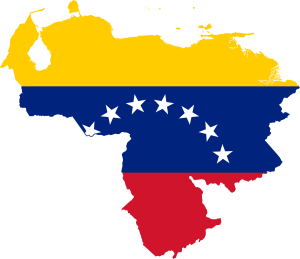Everything You Need To Know For Venezuela
Geographical Position And Climate Of Venezuela
Venezuela, officially known as the Bolivarian Republic of Venezuela, is located on the northern coast of South America. It is bordered by the Caribbean Sea to the north, Brazil to the south, Colombia to the west, and Guyana to the east. The country also has a number of islands in the Caribbean Sea. Venezuela is a country with a diverse topography that includes a range of natural features from high mountain peaks to low coastal plains.
Venezuela is known for its diverse climate, which varies due to the country’s proximity to the equator and its varied topography. Primarily, Venezuela experiences a tropical climate with little seasonal variation, though it can be more temperate in the highlands.
Brief History Of Venezuela
Before the arrival of Europeans, various indigenous peoples such as the Caribs, Arawaks, and the Timoto-Cuicas inhabited the region. Christopher Columbus was the first European to reach Venezuela in 1498. Subsequently, it became a Spanish colony. During this time, Spain exploited Venezuela’s resources, particularly cacao and coffee, which formed the basis of its economy.
Inspired by the American and French Revolutions, Venezuelans began their struggle for independence under the leadership of Francisco de Miranda and later Simón Bolívar, who eventually liberated not just Venezuela but also Colombia, Ecuador, Peru, and Bolivia.
After independence, Venezuela became part of Gran Colombia, a short-lived republic that collapsed due to regional differences. Following the dissolution of Gran Colombia, Venezuela experienced a period of political instability and dictatorship dominated by caudillos (military strongmen), including José Antonio Páez and Juan Vicente Gómez. After a period of military rule, democratic governance was restored with the Puntofijo Pact, leading to decades of two-party dominance by Democratic Action and COPEI.
Hugo Chávez was elected president in 1998, initiating a series of socialist reforms known as the Bolivarian Revolution. He remained in power until his death in 2013, after which his vice president, Nicolás Maduro, took over. The political situation remains deeply contentious, with an opposition-led National Assembly declaring Juan Guaidó interim president in January 2019, though Maduro retains control of state institutions.
Religion
The dominant religion in Venezuela is Christianity. Roman Catholics are the most numerous, followed by Protestants.
Language
The official language is Spanish. Other languages spoken in the country are English, French and Portuguese.

Venezuela, a country located on the northern coast of South America, is known for its diverse natural attractions. From the heights of the Andes Mountains to the Caribbean coastline, the sprawling Amazon Basin, and the stunning Angel Falls – the world’s highest uninterrupted waterfall – Venezuela is a destination that appeals to adventure seekers, beach lovers, and culture enthusiasts alike.
Places You Must Visit In Venezuela
- Angel Falls
- Los Roques Archipelago
- Gran Sabana
- Caracas
- Coro
- Merida
- Isla de Margarita
- Lake Maracaibo
- Parque Nacional Mochima
Before You Visit Venezuela
Travel to Venezuela
Travelers can get to Venezuela primarily by air, with the main international airport being Simón Bolívar International Airport, also known as Maiquetía Airport, located near the capital city, Caracas. There are flights from several countries in the Americas and Europe, although options may be more limited compared to other South American destinations.
Overland entry is possible through border crossings with neighboring countries such as Colombia and Brazil. However, these land borders can be subject to closures or restrictions, so it’s important to check the current status before planning an overland route into Venezuela.
Given the country’s complex economic and political situation, travelers should exercise caution, stay informed about the latest travel advisories from their government, and consider safety when planning a trip to Venezuela. Once in the country, domestic flights and buses are available for internal travel, but again, it’s essential to stay updated on local conditions.
Visas for Venezuela
Visa requirements for Venezuela vary depending on the traveler’s nationality. Citizens from several countries, including most Latin American and Caribbean nations, as well as some European countries, do not require a visa for short stays for tourism purposes.
Travelers from countries that do require a visa must apply at a Venezuelan consulate or embassy prior to their arrival. The types of visas include tourist, business, and work visas, among others.
Due to the changing political and economic situation in Venezuela, it is crucial for all travelers to check the latest visa requirements and travel advisories from official sources before planning their trip. Additionally, visitors should ensure their passport is valid for at least six months beyond the date of entry into Venezuela.
Best time to visit Venezuela
The best time to visit Venezuela generally depends on the region you plan to visit and the activities you want to enjoy:
- Caribbean Coast & Islands (including Los Roques and Margarita Island): The dry season from December to April is ideal for beach activities, with less rainfall and lower humidity.
- Andean Region: The dry season is also preferable here, particularly from October to May, for hiking and enjoying the mountain scenery.
- Amazon Rainforest: Although it’s humid and rainy year-round, the drier months from October to April can make access easier and activities more enjoyable.
- Orinoco Delta and Llanos: The wet season from May to October is when wildlife spotting is at its best, as animals gather around the water sources.
Keep in mind that Venezuela’s political and economic situation has led to varying levels of infrastructure and services, so it’s important to stay informed about current conditions and travel advisories. Additionally, some areas may be more accessible and safer for tourists than others.
Important Information
Capital – Caracas
Territory – 916,445km2
Currency – Venezuelan bolivar
Time Zone – UTC-4 (VET)
Population – 30,518,260
Demonym – Venezuelan
